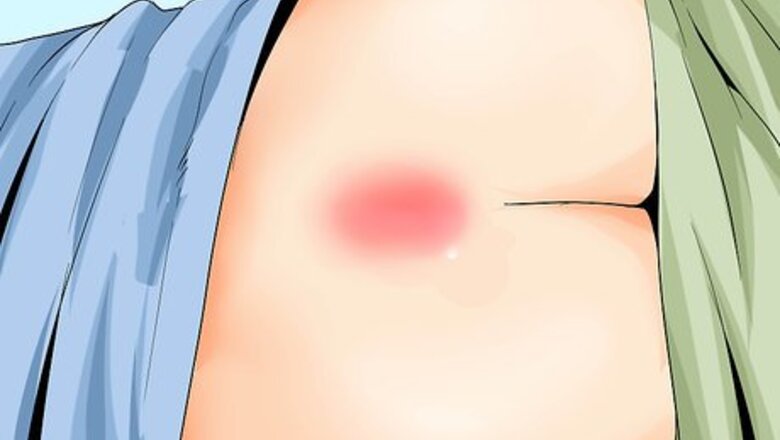
views
X
Trustworthy Source
Mayo Clinic
Educational website from one of the world's leading hospitals
Go to source
If you have a pilonidal cyst, you can learn how to treat them.
Treating a Pilonidal Cyst at Home
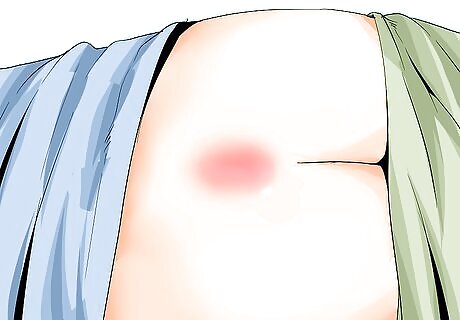
Start treating the cyst when it starts to form. You can treat a pilonidal cyst with at-home treatments. The at-home treatments are best done as soon as you feel any swelling or tenderness that may indicate a pilonidal cyst is forming. If it is showing signs of infection, see your doctor. Wash your hands carefully before and after applications of any or the home remedies. Signs of infection include redness, swelling, pain, warmth around the area, and a white, foul-smelling pus that may look like cheese.
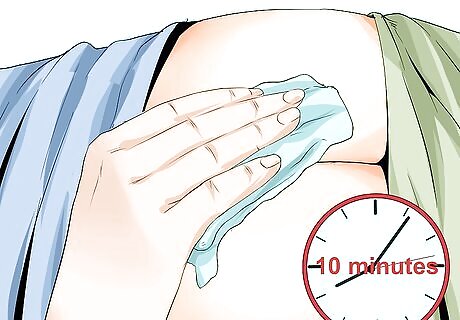
Make a warm compress. A warm compress can help treat the pilonidal cyst. The warmth can help reduce pain and swelling. The dampness from the compress can help soften the cyst. Take a clean washcloth and soak it in warm water. Apply the warm compress to the cyst at least four times a day for at least 10 minutes. The safest way to treat your cyst is by keeping it sterile by only using hot water for a compress, and soap and water to clean it. Keep in mind that using things like essential oils or apple cider vinegar to treat the cyst may increase the risk that you'll get an infection. You can also make a warm compress by soaking a chamomile tea bag. Apply the warm tea bag directly on the cyst. Chamomile tea helps promote healing.
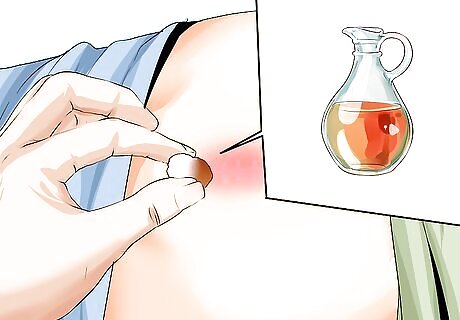
Use essential oils. The essential oils used to treat pilonidal cysts, such as tea tree or turmeric oil, have anti-inflammatory and antimicrobial properties, which help reduce the swelling and the chance of infection. Many of these oils are used to treat cystic acne and other types of infected cysts as well as used to reduce inflammation. Essential oils you can use to treat pilonidal cysts include tea tree oil, turmeric oil, garlic oil, and frankincense oil. Castor oil is commonly used as an anti-inflammatory agent and to soften the cyst. It may also be helpful in speeding the healing of a cyst. The essential oils can be applied directly onto the cyst, though you can also mix them with castor using three parts essential oil and seven parts castor oil. Use a cotton ball or a Q-tip for application. Apply to the cyst four times daily. You may cover the cyst with a bandage after application of the oil. If no improvement is seen with one to two weeks, contact your physician for advice.

Apply drying agents. You can dab witch hazel or apple cider vinegar on the cyst to help heal it by drying out. Witch hazel will help dry out the cyst because of the astringent qualities of the tannins found in it. Apple cider vinegar also has astringent properties. Apple cider vinegar and witch hazel also help to fight infections. If it stings or your skin seems to be sensitive to the apple cider vinegar, dilute the vinegar with an equal amount of water. Just apply with a cotton ball or a Q-tip.
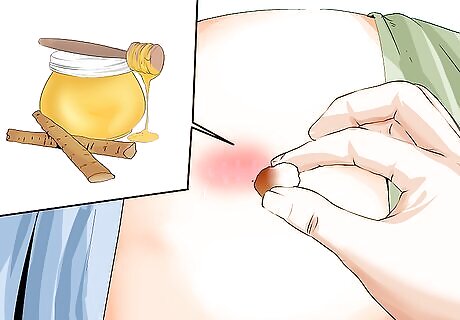
Use burdock root. Dry burdock root can help draw out the proteins in the cyst. Burdock can be used to dry out the cyst, and is a common herbal remedy for skin conditions. Mix 1/2 teaspoon of dried burdock root with one tablespoon of honey. Apply to the cyst. The honey is an antimicrobial substance and will also draw out the material in the cyst.
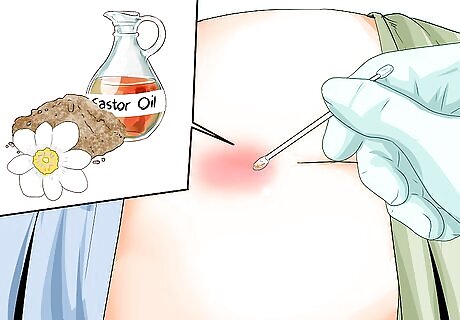
Try bloodroot. Bloodroot has been used traditionally in Native American medicine to treat skin disorders. You can mix ⅛ teaspoon of bloodroot powder with two tablespoons of castor oil. Use a Q-tip to apply directly on the cyst. Use only small amounts of bloodroot and only on intact skin with no breaks or cuts in the skin. It should not be taken internally and should not be used around the eyes, mouth, or around the genitals.
Treating a Pilonidal Cyst Medically

See your doctor. After trying home remedies with no relief, if the pilonidal cyst has become infected, it is recommended that you see a physician. Call your physician if the cyst seems to be infected, which means it may be painful warm, swollen, or have reddened skin, or if symptoms are getting worse. It is not recommended that you try to drain a cyst on your own. If you think a cyst has become infected, keep it clean and covered until you are seen by a physician. Be very careful not to squeeze or otherwise damage the area.

Have the cyst drained by a surgeon. Infected pilonidal cysts are treated by draining them surgically. During the surgery, the area is numbed with a local anesthetic and a small incision is made into the cyst to drain the contents. After drainage, the cyst can be left open to heal. This often takes longer to heal, but is associated with a decreased risk of having the cyst recur. Alternatively, the cyst can be sewn shut and allowed to heal. The contents of the cyst usually include a mixture of blood, pus, dead skin cells, and other debris. 20 – 50 percent of the time the cyst reoccurs after an incision and drainage. Definitive treatment is surgical excision. Antibiotics may also be prescribed to help heal the infection. Be sure to follow your surgeon's aftercare instructions carefully.

Keep the area clean. After you have the cyst surgically drained, you need to make sure to keep the area clean. You should make sure the dressings are regularly changed. The wound should be cleaned daily, either in the shower or with a sitz bath. During the healing process, keep the hair around the wound shaved. You may consider trimming or shaving the hair in that area to avoid a future cyst.
Understanding Pilonidal Cysts
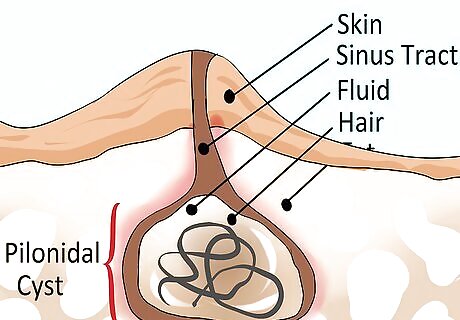
Learn what a pilonidal cyst is. A pilonidal cyst is a bump that pops up at the top of the cleft of the buttocks. The pilonidal cyst can get infected and turn into an abscess, which means it will fill with pus and need to be drained. A pilonidal cyst usually occurs due to ingrown hairs or other debris trapped beneath the skin.

Determine if you are at risk. Pilonidal cysts occur most commonly in men in their twenties and thirties. They also can occur in people who have to sit a lot and have sedentary jobs, such as truck driving and office work. Pilonidal cysts also occur more commonly in people with a lot of body hair or with coarse, stiff hair. These types of hair can puncture a cyst more easily. Other risk factors include being overweight or obese, if you have recently experienced local trauma or irritation, a deep natal cleft (the groove between the buttock), or if there is a family history of such disease.
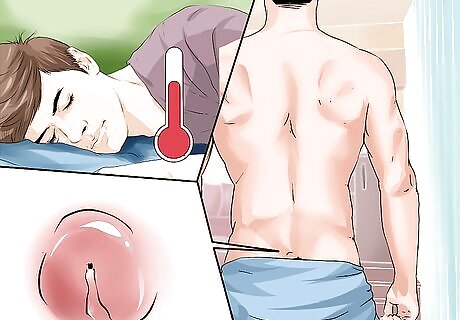
Recognize the signs and symptoms of pilonidal cysts. If a pilonidal cyst is not infected, there are usually no significant symptoms; however, if an imbedded hair punctures the cyst, either because you are sitting too much, wearing tight clothing, or some other unknown factor, the cyst can become infected. If you are experiencing any of these symptoms, you should see a physician as soon as possible. When the cyst becomes infected, you may experience: Swelling Pain Redness Drainage with a nasty odor Fever Formation of a cavity which may contain granulation tissue, hair, and debris


















Comments
0 comment